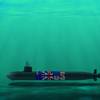The Transportation Security Administration (TSA), in consultation with the U.S. Coast Guard, will begin testing advanced explosives detection technology today as part of the Secure Automobile Inspection Lanes (SAIL) test project. The program will conduct explosives screening on automobiles boarding the Cape May-Lewes Ferry in Cape May, N.J.
The 30-day test uses a mobile screening van, fitted with an advanced non-invasive screening technology called Z Backscatter. Passengers will briefly exit their vehicle and then the screening van will slowly drive next to the car or truck and screen for explosives. The entire process takes less than a minute, and travelers will not be delayed or miss their ferry due to the program.
“The SAIL prototype will test technology that can detect the presence of conventional and plastic explosives,” said Rear Adm. David M. Stone, USN (Ret.), Assistant Secretary of Homeland Security for the Transportation Security Administration. “This is yet another tool that can used to respond to specific threats that arise from new intelligence or major events.”
Z Backscatter is one of a number of technologies TSA has tested for various modes of transportation in recent months. In addition to SAIL, TSA is analyzing systems to screen rail and airline passengers for explosives using walk-through trace portal machines and document scanners. Using new methods for biometric identification, TSA is piloting a Transportation Worker Identification Credential as well as a Registered Traveler Program designed to provide a higher level of security and customer service for frequent flyers. The agency has also begun testing explosives detection systems for screening cargo transported by land, rail and air.
Transit and Rail Inspection Pilot, Transportation Worker Identification Credential, airport explosives screening prototype, and numerous other programs provide TSA with a broad range of new security tools.
TSA screeners will operate the equipment for the SAIL pilot, working closely with the U.S. Coast Guard and the Delaware River and Bay Authority to manage this first-of-its-kind test for vehicle ferries in the United States.
In addition to the SAIL project, Department of Homeland Security agencies are working on other ferry security projects, including an interagency team led by the Coast Guard and TSA. This team is studying potential consequences of an attack on a ferry, possible explosive screening technologies, and the socio-economic effects of the different screening strategies. The results from the SAIL project will be used in this broader effort
Subscribe for
Maritime Reporter E-News
Maritime Reporter E-News is the maritime industry's largest circulation and most authoritative ENews Service, delivered to your Email five times per week










